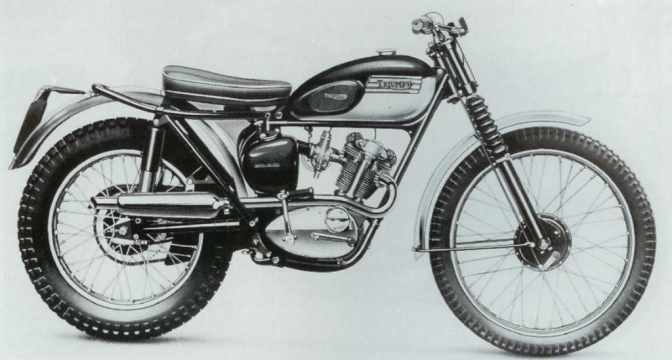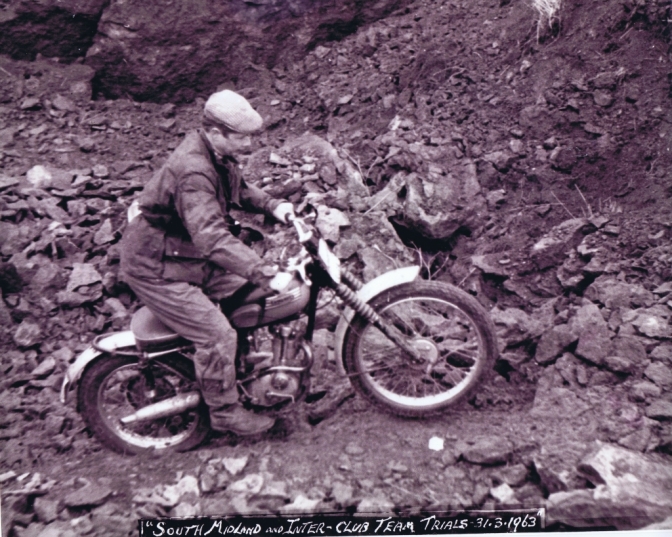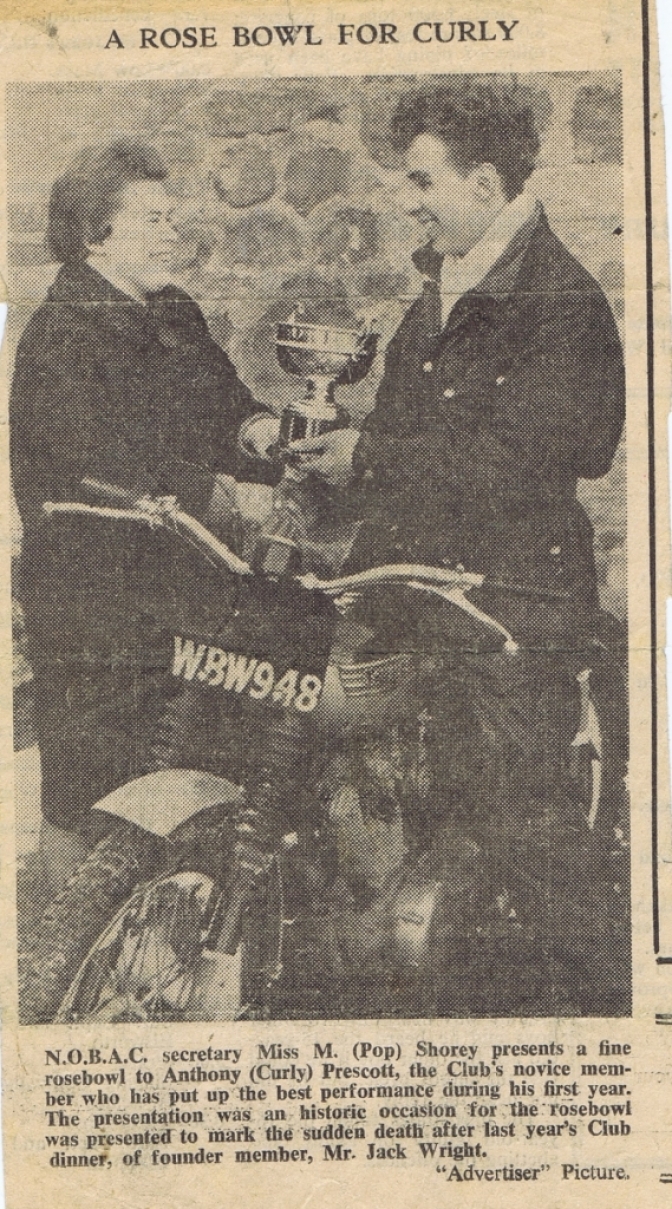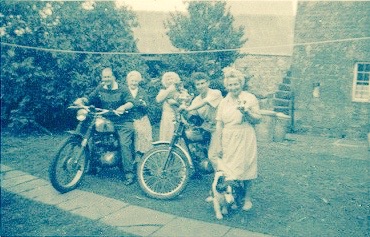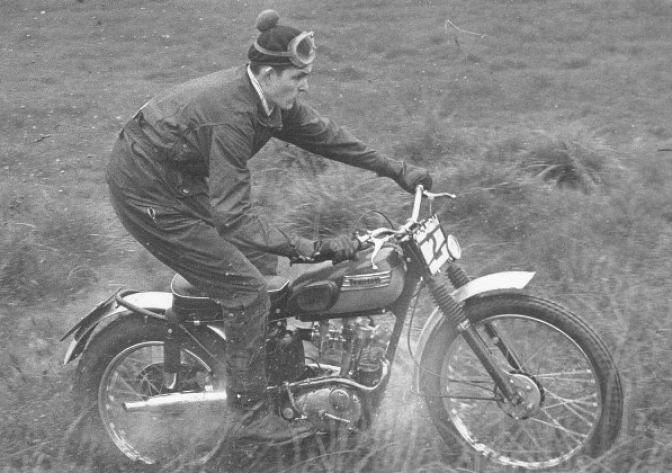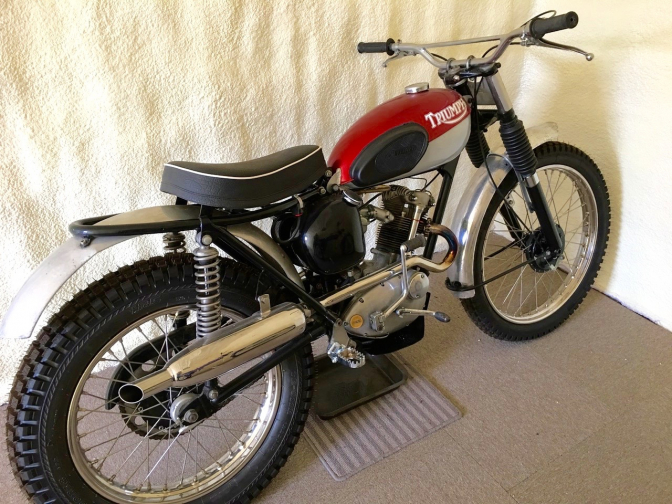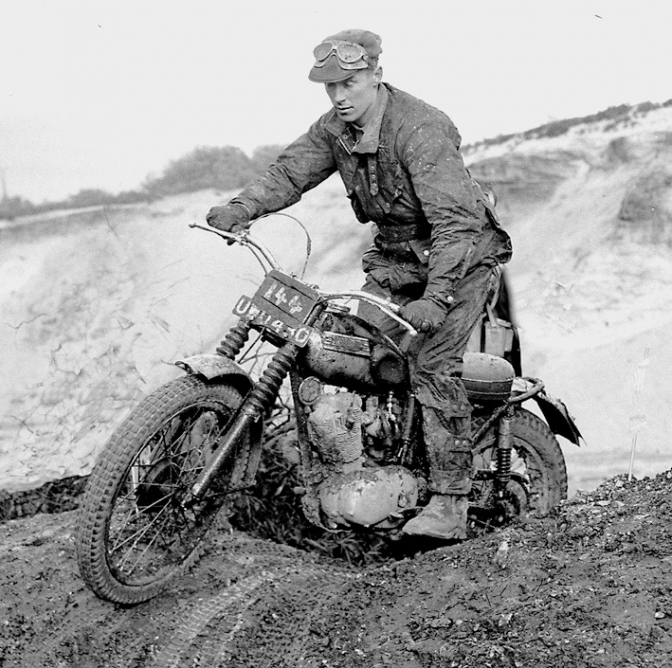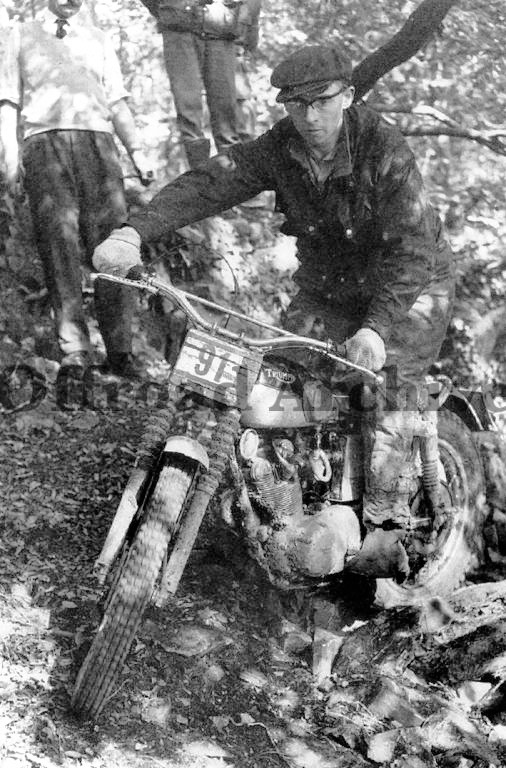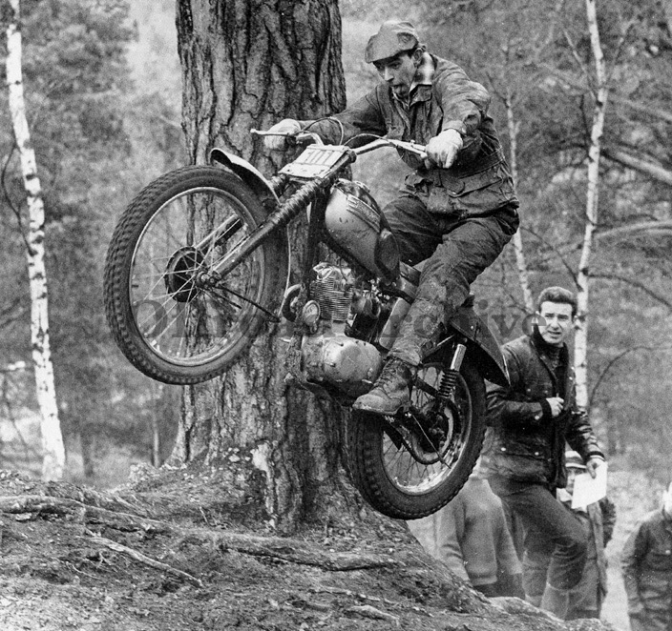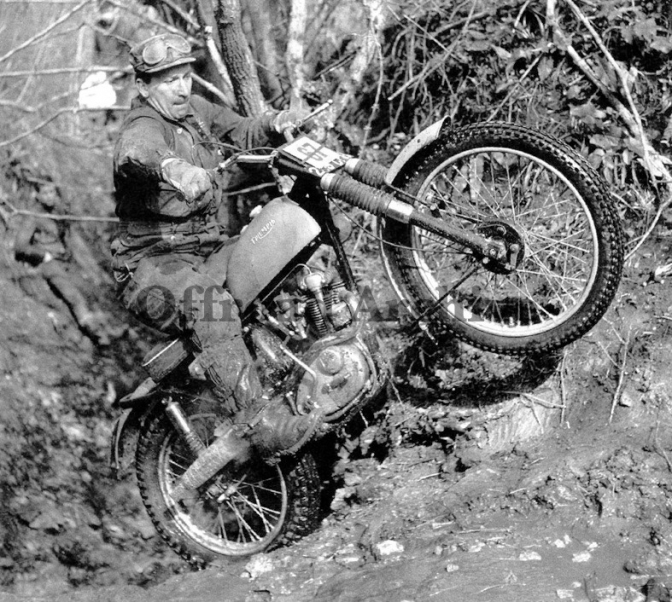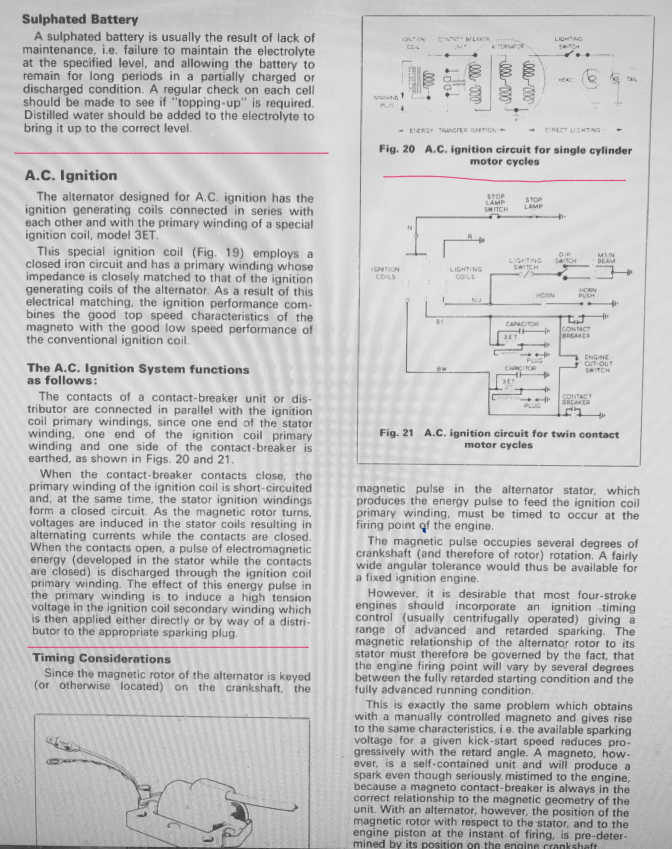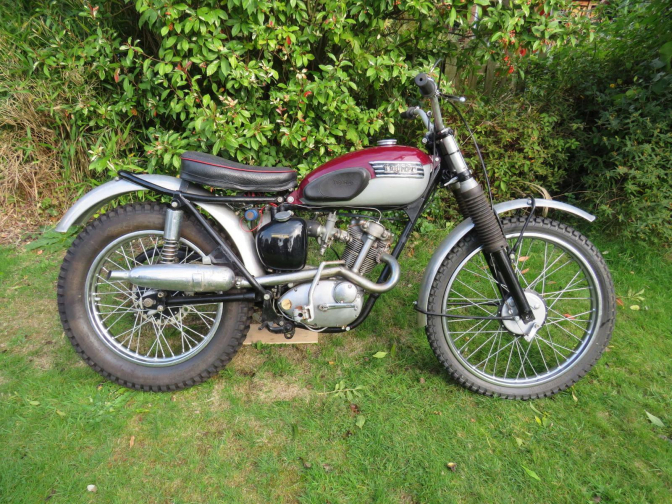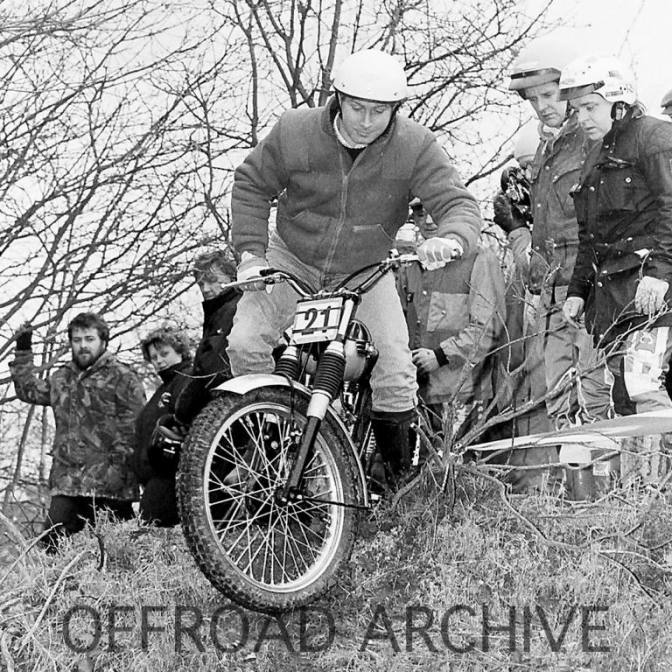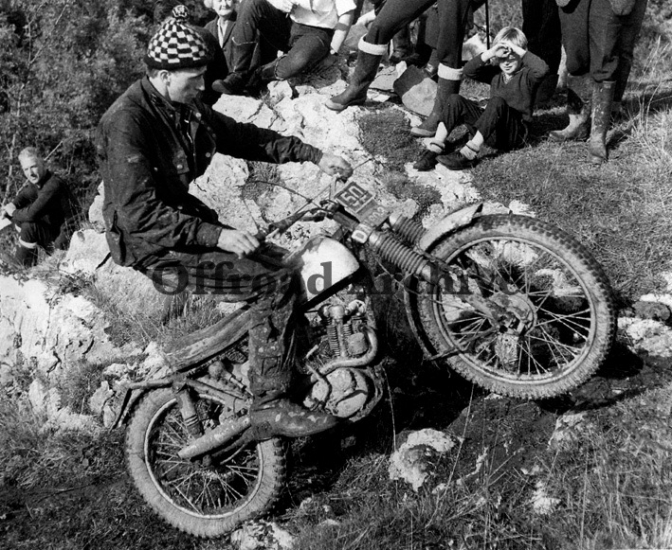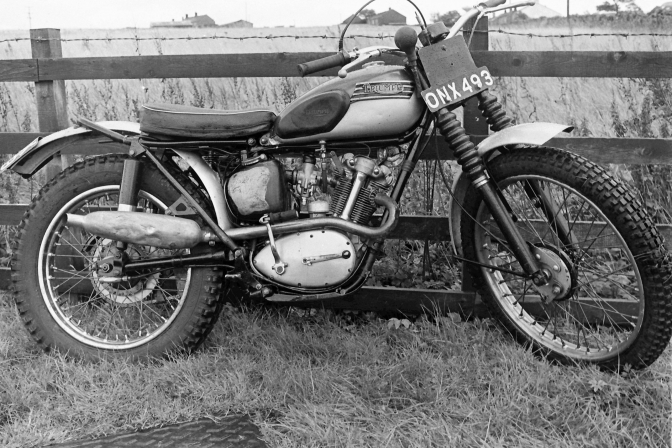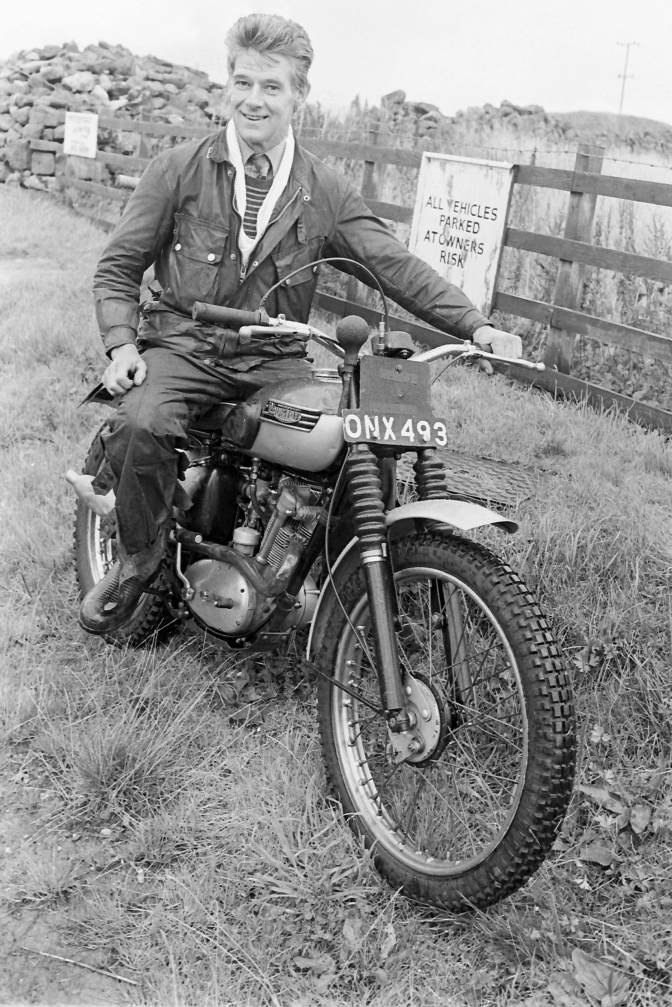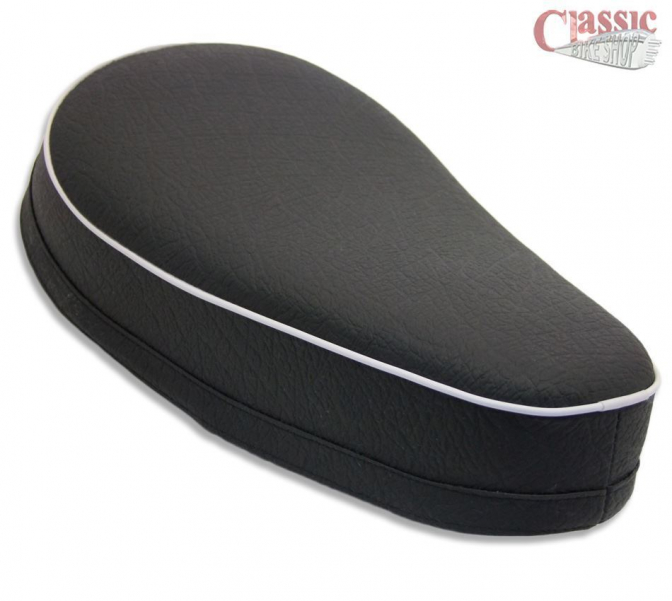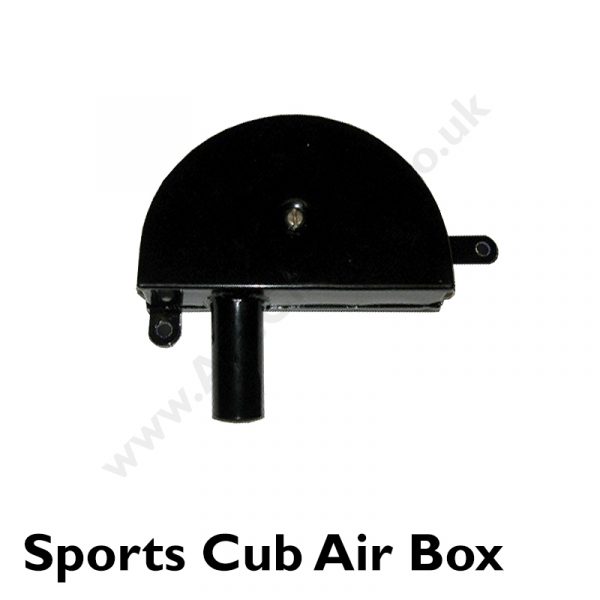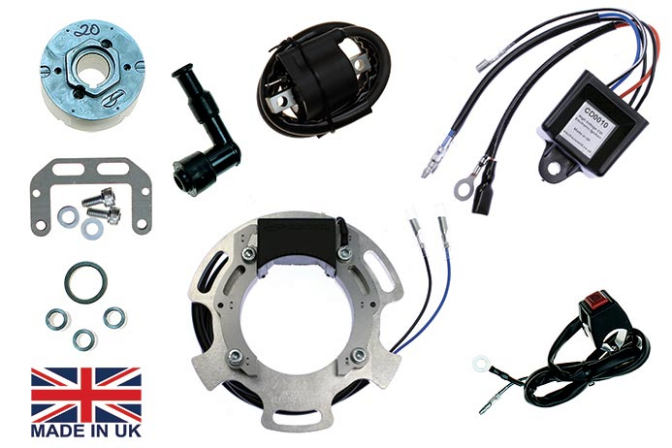The 1963 Triumph TR20 Trials Tiger Cub.
I will start this page by just recalling the page from my 70 years story and then looking at the Triumph TR 20 Trials in a bit more depth, but keeping to the bikes as they rolled out of the Triumph factory at Meriden and not create the page for specials...
It really is 50 Years since I had my Brand New Triumph TR20 trials Tiger Cub....
This was the first four stroke trials bike I owned , and like most young lads or even older folk, we had to use our trials bikes to get to work for the week, before using it has a trials machine at week ends. Now I had a problem, well I still have, I was always late to rise in the morning and this made me late for work. So the bikes I owned were always thrashed to try and get me to work on time. Not a good Idea on a New bike that was not run in. Into about the second week of owning the Triumph TR20 Cub, it seized on the way into work. Bert Shorey said to me "You have been caning it Kid haven't you". "No Honest Bert, I haven't". Was the reply. Anyway, the bike was loaded onto the back of the Austin A40 pick-up, by Dan Shorey, and trundled off back to the Triumph factory for repair. A week later the bike returned, collected again by Dan, and with a new engine fitted, and a few more mods that the factory had done too. The engine had apparently picked up swarf from somewhere, and this had blocked the oil pump. So it was not My fault? "Well I had been Caning it". After month of ownership and enjoying the ride of a proper four stroke trials bike, even though the energy transfer Ignition was already a pain at times.
Then the Inter Centre trials Championships came along, this was 1963... Well I was not that good a rider yet. So I passed my bike onto a good friend to use it in the trial. Well they all were good friends in the Banbury NOBAC club. Anyway Ted Freeman was without a bike to ride for the event ! A Francis Barnett works contract I seem to remember. So he rode the Triumph TR 20 Cub, and loved the ride on the little bike.
As you can see Ted was a stylish rider, and deserved his ride on a works bike has well as mine for the day, and I learnt a lot from watching him ride it ...
The venue for the trial was Edge Hill quarries, and you can see how loose the Hornton iron stone was in them days, just like shifting sand. ~~~~~~~
By the end of the year I was awarded the "Jack Wright Rose bowl" for best novice rider in their first year of trials riding. I also received a copy of "Trials Riding" by Max King, and have it today. Although the spine has masking tape strips holding the little book together, with the use it has had. I will be passing this onto my grandsons to use when they are older.
Banbury Advertiser Photo... As you can see from the picture using the bike to commute at this time of year was probably the best option of transport to do the seven mile journey to work. And the bonus was that with no lights fitted at this time, I was allowed to leave for home on my return journey before lighting up time. I did have a shock one night though I can remember, and proved how useless the brakes were, when the black image of a sheep jumped out in front of me, and I had to prove I could ride a trials bike? Up on the pegs immediately and take avoiding action. ~~~~~~ Happy days.
October 2015. Just found this tiny snap taken with a Brownie box camera I think, in 1963. Left to right : Father and Grandmother, on the BSAC15, gran was about ninety at the time I seem to remember. My Aunt who had just inherited the farm, with the cat, that I forget its name...Tinka I think... Then me sat on the Triumph TR20 Cub holding the "Jack Wright Memorial Trophy" Then the dog Toby, missing his deceased master, and then Mother who had to put up with all of us, and the latest fad by me to become a world class trials rider! I take it that it was my brother behind the camera. Happy days.
There was someone else who had an out of the factory TR20 Trials Cub, soon after I had mine, and I got to be good friends with him then and in then again in later life. Well he used to come along to North Bar Garage to collect the parts for his bike sent from the Triumph factory. Dan or Bert used to go to Triumph's on a weekly basis, and it was more convenient for Chris to collect the parts he needed for his Triumph TR20 Cub after work,in the evening and pick them up from the garage, as we were open until ten O'clock every night of the week for the petrol sales. The guy I am talking about is, the late Chris Leighfield, who in 1972 moved to Australia. I am just about to do a page on the guy. What a Trooper and a blueprint for all of us!!! Here he is riding the TR20 Cub in the 1964 Bemrose trial.
They were like that "Honest, Guvner"! straight out of the factory.
Just looking at the pictures, can you see how messy the routing of the front brake cable was, and this straight out of the factory! We have come a long way chaps. But do we get more pleasure riding the "Trick" bikes we have come up with today, pretending they are the same has came out of the factory? This page will continue to just look at these Factory built Machines
This is the Triumph TR20 Trials Tiger Cub we have just rebuilt to be in the same condition as mine was all of those years ago in 1963...
So,what am I going to do with this page? Well I am going to specifically look at the Triumph TR20 trials Cub as they were when they left the factory between 1962 to 1965... And look at the positive points about the little bike, and also the negative faults and the limitations, to their use as a winning trials machine... The Works riders at the time would be allocated one of these machines direct from the production line, and were told to ride the bike without touching it, and without any cosmetic changes to the appearance. So how did they get on?
Photo Courtesy Deryk Offroad Archive... Triumph Works ride John Giles was one of the first to get a grip of the little Cub, and his results must have boosted the initial sales of the machine...
Photo Courtesy Deryk again Offroad-Archives...
Scott Ellis on his works Triumph TR20 Cub in 1964, and visibly the only changes has been to fit braced steel handle bars, and remove those very sharp, and trials-suit ripping, tank badges...
Photo Courtesy Offroad Archives...
Murray Brush flying the J.A. (Jock) Hitchcock's Dealer bike from Kent... This Triumph dealer was one of the biggest outlets for the TR20 Cubs at that time, and its riders like Murray will have benefited to a certain amount of works support... Murray later with his mate developed the alloy parts that were fitted to the last works Cubs, and sold by Comerfords... ~~~~~~~ So shall we start with the faults that were apparent with, and on the machine, or do we state the advantages of owning a Triumph TR20 Cub in 1962-65... first... Lets do the good part first. What you must realise that this was the early sixties, and before the turn of the decade, most trials machines sold were large and heavy, and the factories only really ran these machines as their showcase, although smaller mostly two-stroke machines had actually done very well thank you, they did not have the same image as the big four-strokes... Although the BSA/Triumph group had also the BSA C15 T just coming on stream as an over the counter trials bike, given a choice, most young riders seemed to plump for the lighter Triumph Cub. What I thought was a big advantage was that it was a four-stroke engine and not a two. Whether it was the Greeves that I had owned previously that had put me off of two strokes I still don't know, and don't forget I was working on big four-stroke tractor, and truck engines at the time, real man's machines... The Triumph Cub just seemed to suit me the first day I rode it, and I had spent all day practising with it on my trials ground... I could find and control grip better than with the Greeves, and although the forks were skimpier and did twist, I seemed to be able to get more positive steering from them, or was it that the throttle control of the little four-stroke was the key? I can remember to this day riding along my stream and up the small waterfall step, and although it felt like the forks were twisting all of the time, I also felt in full control... So the combination of the light weight and the peppy little four-stroke engine is what made the Trials Cub to me the best machine on the market, and don't forget I had ridden most machines owned by my Banbury NOBAC mates on most Sunday mornings, as comparisons... You can see what I thought, so we better get on with the faults.
Well you can see that the front forks were perhaps a bit of a problem, in that they were quite lightweight and did tend to twist, the damping and travel could have been a lot better, but basically these were road forks from the Triumph T21 350 and not designed for off road use. the BSA C15 had the C11-12 fork type fitted that were a lot more substantial. The forks were upgraded in 1964-5 and were stiffer with outside the stanchion springs fitted and more like the BSA... photo.
Photo Courtesy Offroad Archive... You can see with this shot of 1959 Scottish Six day winner on a Cub, Roy Peplow riding what I think is his 1965 Works Triumph Cub, and the last one from the factory, that this machine has the updated Triumph front forks fitted... ~~~~~~~ We will move to the rear of the little machine next, and you know what is coming! And if you live in the West Country you would have had more of a problem, yes mud... Fitted with a four inch back eighteen inch tyre, there was not a lot of clearance near the front of the swinging arm, and mud and leaves would some times jam the gearbox sprocket as well. Clearance on the steel production chain guard was also tight and caused problems with the relatively small chain... Mud would also ingress into the rear brake hub and stop this working, but did they ever work. First job on a Monday lunchtime at work at Young's, would be to remove the back wheel and brake plate, and then blast the lot with the old "Steaming Jenny"boiling steam cleaner... Sticking float on the Amal Monoblock carb was another small issue but, this was the same on what ever they were fitted too. The major problem with the Cub was as you all know that Lucas/Triumph Energy Transfer ignition... It should have been good all Lucas technicians said, it was simple, it was, but a lot of the time it did not work, you could set the points gap to either get it to start and not run properly, or just the opposite the bike did not want to start but eventually when you had got enough kicks in to charge the magnets, it would when running not be too bad. The short kick-start lever was half the problem, in that it would only kick as far as the reversed footrests, so limiting the amount of stroke. This was later solved with the dog-leg lever that missed the pedal.. Chris was gifted one of these from the factory, but I did never get one. Back to the ET well there were two crucial parts to this system, well perhaps three, for you did have to make sure everything was earthed very well, not good with a wet and muddy trials bike. The rotor timing magnets needed to be spot on and this setting was more than crucial as the the point that it passed the wound coil was when it fired the strongest spark, and this has to coincide meticulously with the opening of the points that then releases the energy into the specially wound coil. Any deviation, and you don't get the spark. The biggest culprit for this variation is, and was, the bob-weight advance retard mechanism, when this moves it alters the dwell point and causes a weak spark... All the Triumph Works trials boys, solved this problem with the use of an ark welder, they just welded the bob-weights solid, and set the timing to how the Cub ran best... I will try and do a drawing for you to explain how this ignition system works. Drawing...
This is from the Lucas Manual, and explains how the Energy Transfer system worked, and how critical were the settings, to get the electromagnetic pulse to fire just at the right moment, both the primary windings, (coil in chain-case) and the secondary windings in the external coil, to get that increased in the HT windings also in the external coil to release the spark to the plug at the right moment... Simple?
Photo Courtesy Siverstone Auctions...2022... This is the late Phil Bright's 1966 Triumph TR20B Cub that Phil rode for years in Pre 65 trials, and you can see that he was using the slightly later zenor diode ignition.. by 1966... ~~~~~~~ The clutch could give problems if not serviced regularly, and also the gears, I seemed to remember it was third that was the problem... The oil pump was not that great, and the engine oil needed to be kept very clean, and changed regularly, these oil pumps were upgraded in 1965 to a more robust unit, in most Cubs...
Got to have a break now but More later...
Courtesy and Credit Offroad-Archives... Here is another photo of the later front forks, and looks to be one of the last Triumph TR20B Cubs from the factory production line...
More Later...With how some alloy parts started to creep onto even the last factory machines...
Photo Courtesy Offroad-Archive...
Gordon Farley, the man that took the Crown, of British Trials Champion away from Sammy Miller, who had held it for eleven consecutive years. Riding here one of the last generation of Works Triumph TR20 Cubs, now fitted with most of the alloy parts developed by Murray Brush and his business partner. Fuel tank, oil tank, top yoke, and both brake plates, and also, air cleaner and fork gaiter shrouds...These parts were later sold by Comerford's, and Gordon would later ride for them on one of the "Comerford Cubs" ... 20/01/2021...
Deryk Wylde has just come up with these two superb shots of this works Triumph TR20 Cub ONX 493... Over to you Deryk... Here's another Triumph TR20 Cub - This was a works bike ridden by Artie Ratcliffe and Ray Sayer - the rider is Blackie Holden.
Photos Courtesy Deryk Wylde... This little TR20 Triumph Cub must have had more results to it's credit, than most others of the breed... And a winning machine in several capable hands.. But the best part is, look how Standard it is...Only the solid foot rests to replace the reversed road going pegs...
Blackie Holden also very much a winner on this ex Works ... Triumph TR 20 Cub machine... ±±±±±± 10/05/2023... For several of our readers who have asked for details of the make up of the Triumph TR20 Tiger Cub... and the parts used at the time they were built, and the nearest replacement parts available today to rebuild one of these super little bikes back to standard Triumph TR20 Specification. So I will do a list of parts and the modifications that the Triumph factory did to the little bikes that they built from the assembly line, from 1963-1965...
I will make a start tomorrow... So lets start with the frame what were these ... Well for the USA market from 1959 Triumph had seen an oppertunity to fill a gap that the Yank's had for riding motorcycles in the mountain regions etc... so already in 1959-1961 had modified a batch of road frames for this market. these were the Cream(Ivory) and Blue (Azure) tanked bikes with 350 x18 rear tyres fitted... incidentally the fuel tanks fitted were the smaller tanks from the Triumph Terrier. of 1954... The swinging arm used was a widened unit Part Number F6192... the subframe used had a high rise exhaust pipe triangle mounting bracket on the right hand side seat stay, and the left hand stay was belled out at the swinging arm pivot end to help chain clearance... The rear of the subframe was gently bent up to help with mudguard clearance, these T20S Mountain Cubs were fitted with offroad style steel mudguards with painted two tone cream and blue centre stripe... So this bike was the basis for the trials bikes built for the works trials team from 1959-1961... The mudguards were replaced with alloy units and the WM2 x 18 rear rims were fitted with Dunlop 4"Trials Universal tyres... Front triangle of the frame was the same as the road bikes with a extra bit of reinforcment around the swan neck area... footrests were just reversed road units without the rubber treads. The nearside pillion rest support was used to carry the now further back foot brake pedal that was still a road bike item... Front forks now used on the 1962 TR20's were modified units from the big brother Triumph 21 350... the T20S Mountain Cub forks were still modified Road Cub units with one inch longer stanchion's with built in twist. The later TR20 Cub forks of 1965 were units with out side springs from the now Triumph Tiger Ninety...front wheels were now 21" on the trials bikes the first T20S Mountain Cubs had 19"WM1 fitted... The steel fuel tanks still fittted on the TR20 Trials an TS20 scrambles Cubs from the Triumph Terrier...were now painted Ruby Red and Silver Sheen... If you are rebuilding a Triumph Trials Cub or even a Road Cub or boxes of bits, there are a few things to decide on to get the TR20 specification right...as I have said the front frame modification is just a matter of adding two reinforsment plates to the bottom of the swan neck joint and removing lugs like centre stand castings. Try and get a later rear Mountain Cub or TR20 subframe that has the down tubes belled out just before the pivot holes and has the little triangle exhaust bracket this lets the exhaust pipe run inside this tube and more room for the chainguard the other side...you can if you wish bend up with heat the back of the seat loop slightly, for as I say better mudguard clearance, and you will have to move the cross tube forward a touch to get a good guard line. If you have no rear hub yet try and buy a BSA Bantam D7-10 hub instead of the Cub one as the Bantam hub is slightly wider, and helps with spoke line for the WM2 X18" rim you are going to fit... If you only intend to use the bike for Green-Laneing there are good copies of the Girling rear suspension units available for a very good price.. and they seem to work well... Seat now there are good copies of these available like the one we fitted on our bike above...
Photo Courtesy Classic Bike Shop Redditch UK...
Front forks and front wheel... If you are starting with a Trials Cub they should have the forks that were fitted at the factory and the wheel, (Or have they been swopped with other make forks.) If it is not a trials bike you may have to look around to come up with forks of the right spec, from some of the other range of Triumph motorcycles... If you have a Trials Cub with the factory fitted Heavyweight forks with internal springs, there are stanchions available with hard chromed finish for just under £100 and also complete reconditioning kits for around £300...There are also chromed fork stanchions available for most Triumph forks from Classic Bike Shop and others in the UK, and also the USA...
If you are building the TR20 specification bike back to the factory spec, there are copy Vokes type air filter boxes available from Ace Classics in London...along with the correct rubber conection hose...
Photo Courtesy Ace Classics London... As I have mentioned the footrests fitted from the factory were just the road bike items swopped from one side to the other... if you are considering any competition or even green laneing, I would change this one item from the original specification and fit a folding footrest kit from Feked Offroad... to save your legs from damage in a fall... ±±±±±±± Right we have the frame just about sorted…the colour of this was always black so paint or powder-coat… By the time of the Triumph TR20 1962 the engine had been upgraded to now have ball bearings on both side of the crank and as I have said on these pages I had the first TR20 with side points from the assembley line at Meriden in January 1963… so you really want to aim for an engine from late 1962 onwards up until my bike they were still fitting the distributor type points… So what do you do or have in the engine… well to make sure or rebuild it to TR20 specification the bottom end was standard Cub from this year (1962-63 onwards) the piston for the TR20 should be low compression at 7-1 although some of the works bikes used a higher ratio I am told…The camshaft fitted was the “R” type that was also fitted into the Sports Cubs. Valves were standard road size that had been upped for the latest model engine there were bigger valves that could be fitted , but not necessary, these If I remember came from the Tiger Ninety… Choke for the carburettor size was 7/8” Sports Cub 15/16” of the top of my head… you could fit a new Monobloc Amal carb to get the specification right as these are available from Amal, but the Concentric carb had been introduced before production of the Triumph Cub ceased… There was and is an updated oil pump for the Triumph Cub engine… and this is well worth fitting as the oil supply to the engine was never that good. And needed keeping very clean… Gears should be the wide ratio ones fitted to the TR20 and even earlier C and S models… if your engine did not originate from one of these TR20 models you may not now find a set of these gears although there were some remanufactured… Clutch just make sure every part is as new, and fit Sure-Flex plates if you can… you could cheat and fit one of Pete Kirby’s diaphragm units and belt drive…You also really do want to cheat with the ignition for your own sake and fit one of these Electrex-World
Photo Courtesy Electrex-World Ltd... This STK200 unit fits into the Triumph Cub chaincase and does not need any machining... units that work unless you want to play for hours with the Lucas energy transfer or even later Zenor diode ignition… trials sprockets for gearbox and rear wheel are available from Talon but they do run out at times and make them in batches… most other parts are available from suppliers like Feked Offroad… Amal copy levers etc… Good luck with your builds, we would like to see the photos of the bikes when they are built… More later... updat2023...05... |


